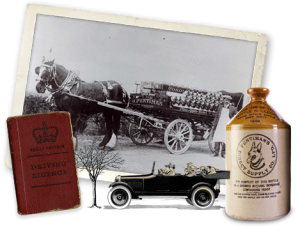 After our initial review of Fentimans tonic water (which you can find here), they reached out to us over twitter and asked whether we would like to review some of their other products, including their light tonic water and herbal tonic water. We of course said yes, so let’s get right into it!
After our initial review of Fentimans tonic water (which you can find here), they reached out to us over twitter and asked whether we would like to review some of their other products, including their light tonic water and herbal tonic water. We of course said yes, so let’s get right into it!
This is going to be a shorter than usual review as all the background information can be found in the previous article.
Fentimans Light tonic water contains all the same ingredients as its brother, including the botanical infusions, which are:
- Juniper berry
- Kaffir lime leaves
- Lemon grass
- Orris root
The main difference is the sugar content and therefor the calories. To be specific, their tonic water contains 34kcal per 100ml with 7.6g of sugar. The light tonic contains 24kcal per 100ml with 5.3g of sugar. This may not seem like a lot but the effect on the drink is huge.
My initial reaction to their tonic water was that it was very sweet and very lemony(I’ve no idea if that is a word, but we’re going with it!). The light tonic water is much more bitter and in my opinion has a much more rounded flavour in the traditional sense of tonic water. Not too sweet and nothing is particularly over-present. In fact, I would go as far as to say I much prefer the light tonic water and have since decided to stock it!
The herbal tonic water is created in the same way as their other tonic waters in that it is fermented with botanical extracts. These include:
- Lime flower
- Hyssop
- Myrtle leaf
- Juniper berry
- Orange
- Kaffir lime leaves
- Lemon Grass
- Orris rot
Some of these are the same as the other tonic waters, but there are some interesting additions! I was unaware of a couple, which included Hyssop. In the words of the ever reliable Wikipedia:
Hyssopus officinalis or hyssop is a(n) herbaceousplant of the genus Hyssopus native to Southern Europe, the Middle East, and the region surrounding the Caspian Sea. Due to its properties as an antiseptic, cough reliever, and expectorant, it is commonly used as amedicinal plant.
The other ingredient I was unfamiliar with was Myrtle leaf. Again, in the words of Wikipedia:
The plant is an evergreenshrub or small tree, growing to 5 metres (16 ft) tall. The leaf is entire, 3–5 cm long, with a fragrant essential oil.
The star-like flower has five petals and sepals, and numerous stamens. Petals usually are white. The flower is pollinated by insects.
The fruit is a round berry containing several seeds, most commonly blue-black in colour. A variety with yellow-amber berries is also present. The seeds are dispersed by birds that eat the berries.
On the nose, the overriding smell is that of proper honey. This may have something to do with the fact that the tonic water is made with granulated sugar but I have a feeling the it is the Hyssop.
To taste, it is not overly sweet as the initial smell might suggest. There are juniper and zesty notes along with honey and a little sharpness. The flavour I couldn’t get away from was tea leaves. The sort of flavour you get from strong, neat tea. That may sound unpleasant but it is definitely not.
This is a very unusual tonic water and one I will have to spend a bit of time experimenting with to find appropriate gins for. That being said, it is so tasty and refreshing that I can’t see myself not keeping it around!
Again, a big thanks to Nicola from Fentimans for the selection of products to try. You can find more about Fentimans fantastic range of products at www.fentimans.com


No Comments